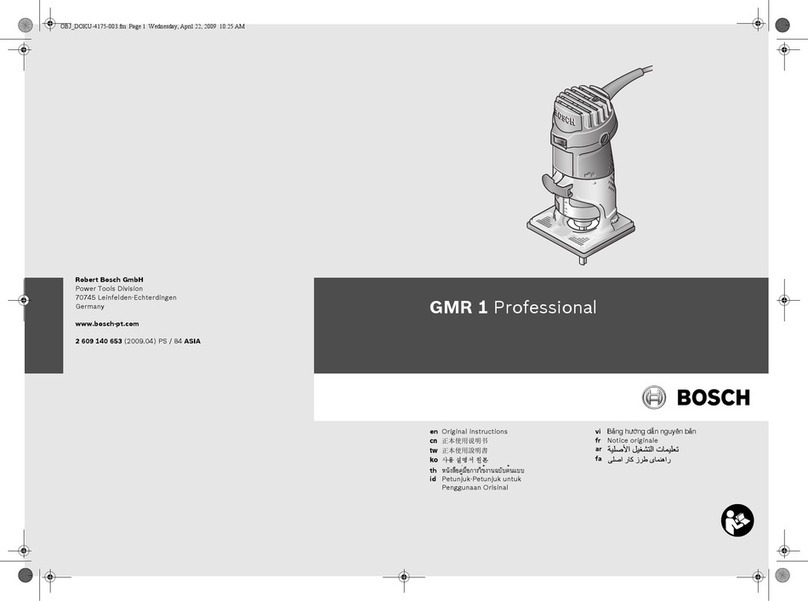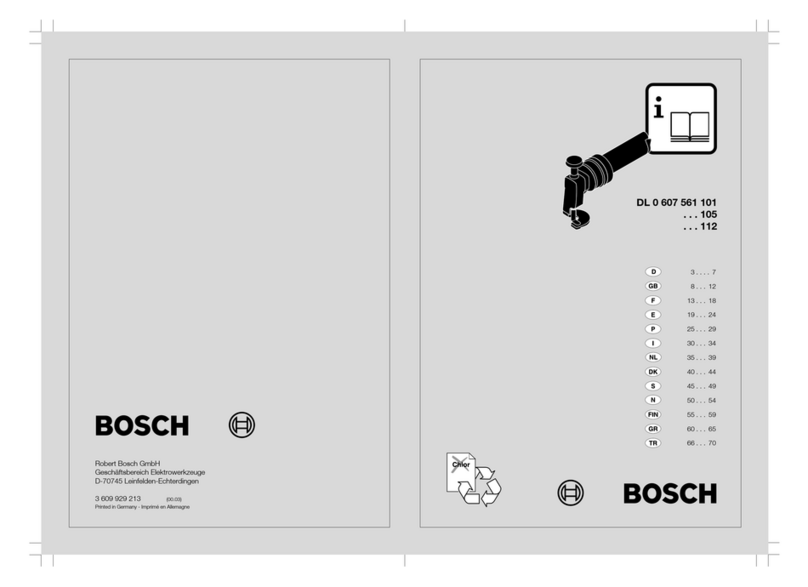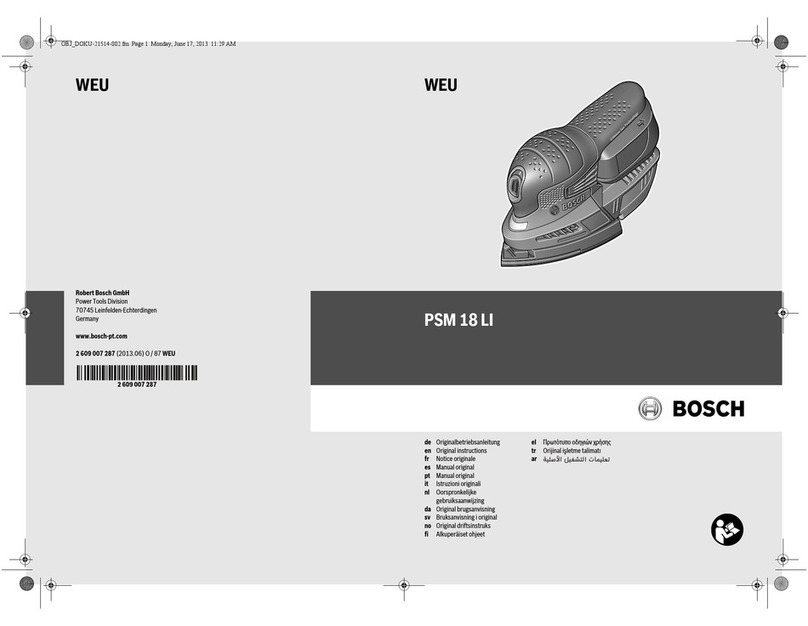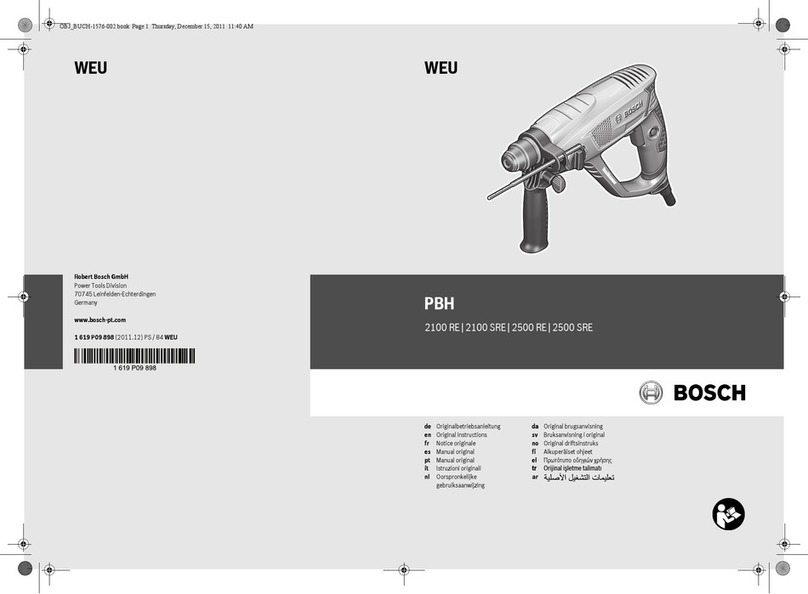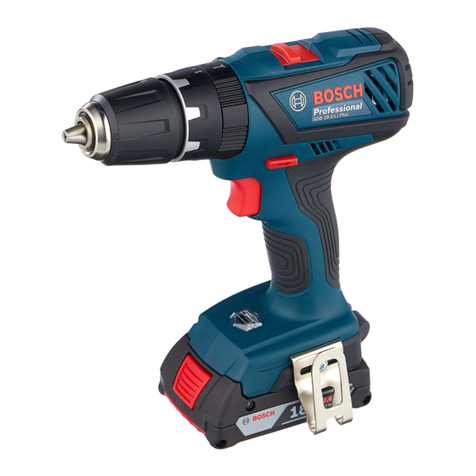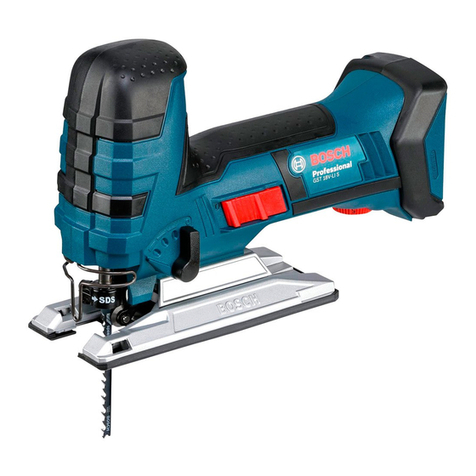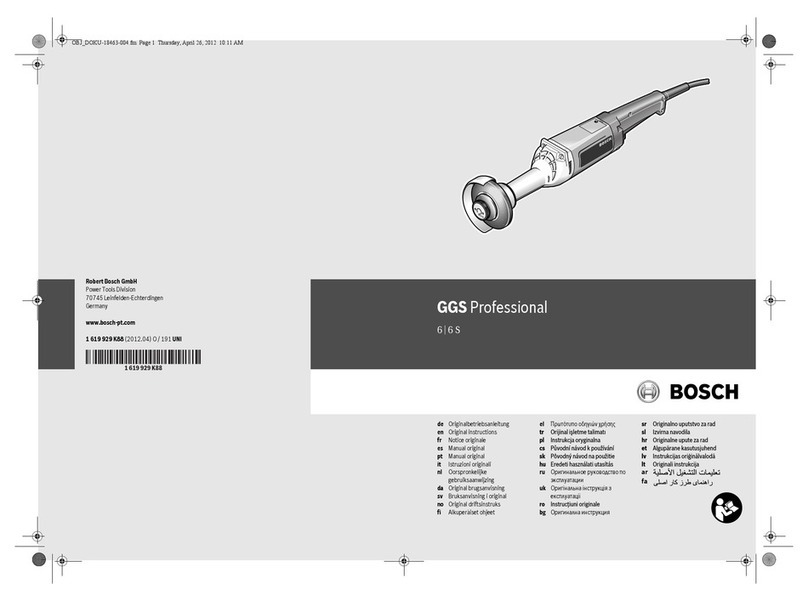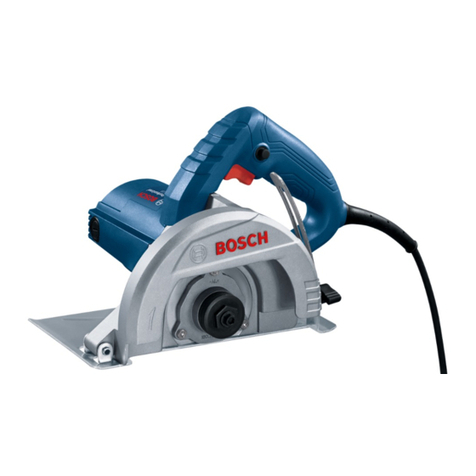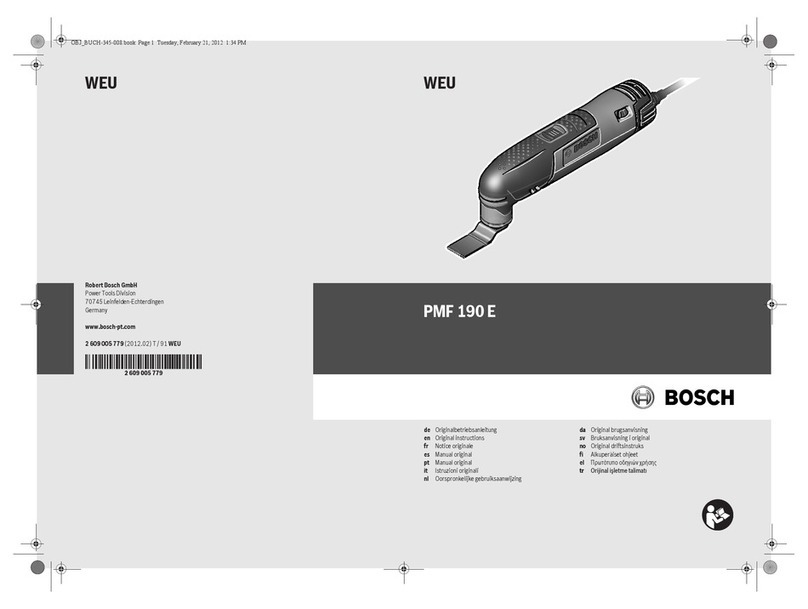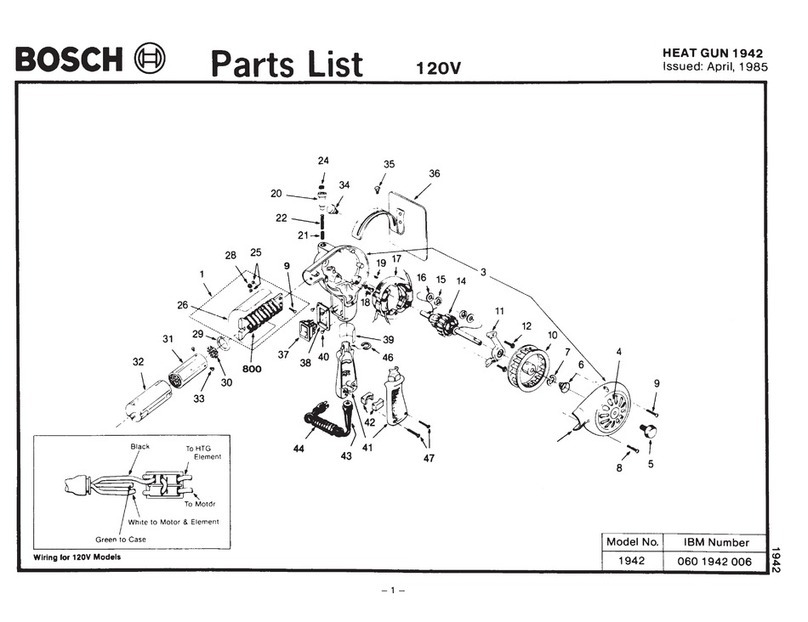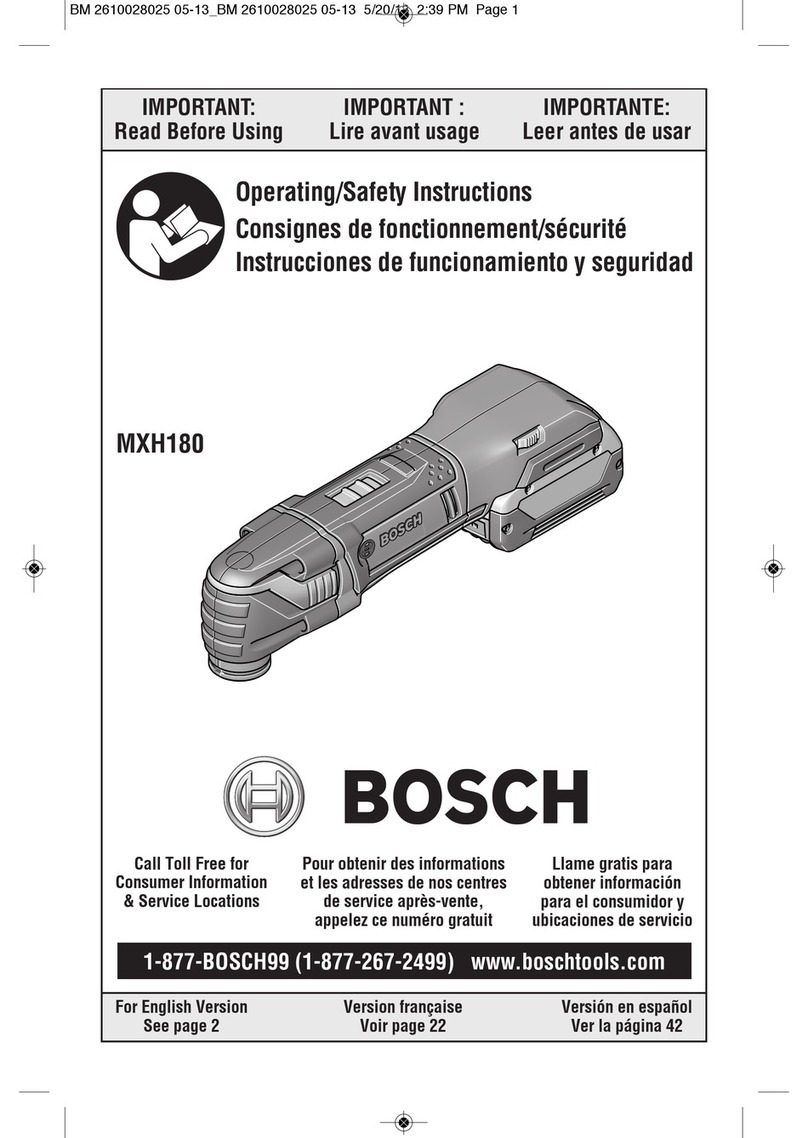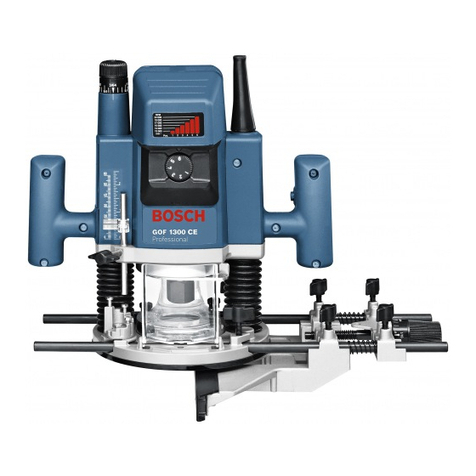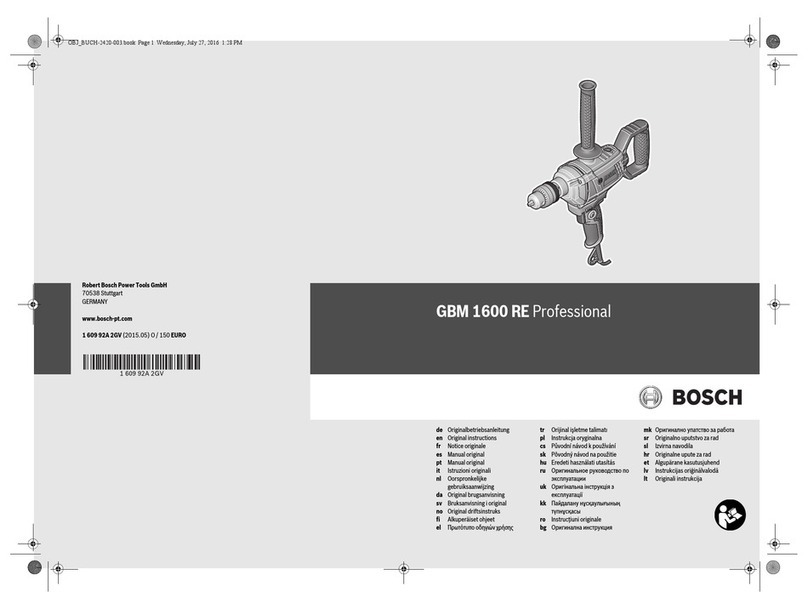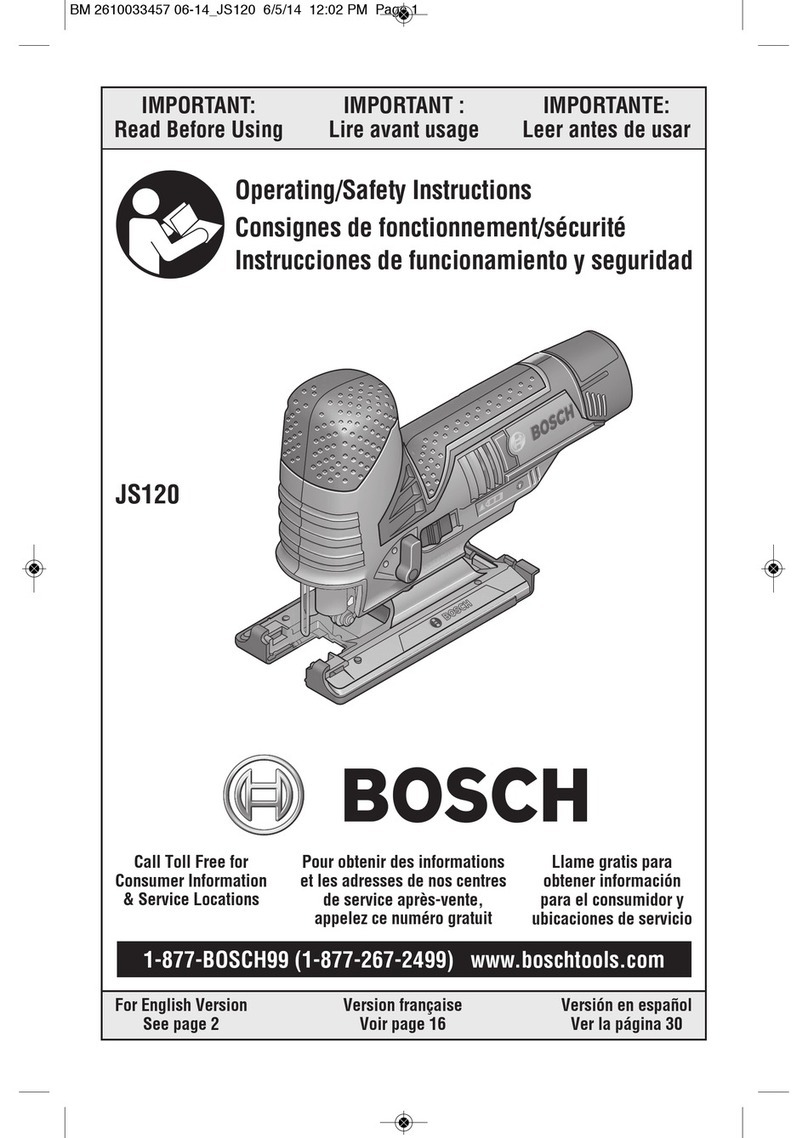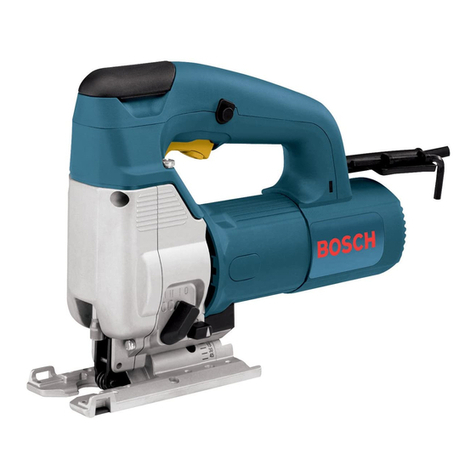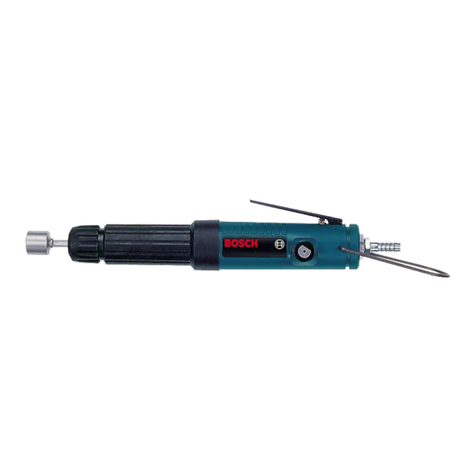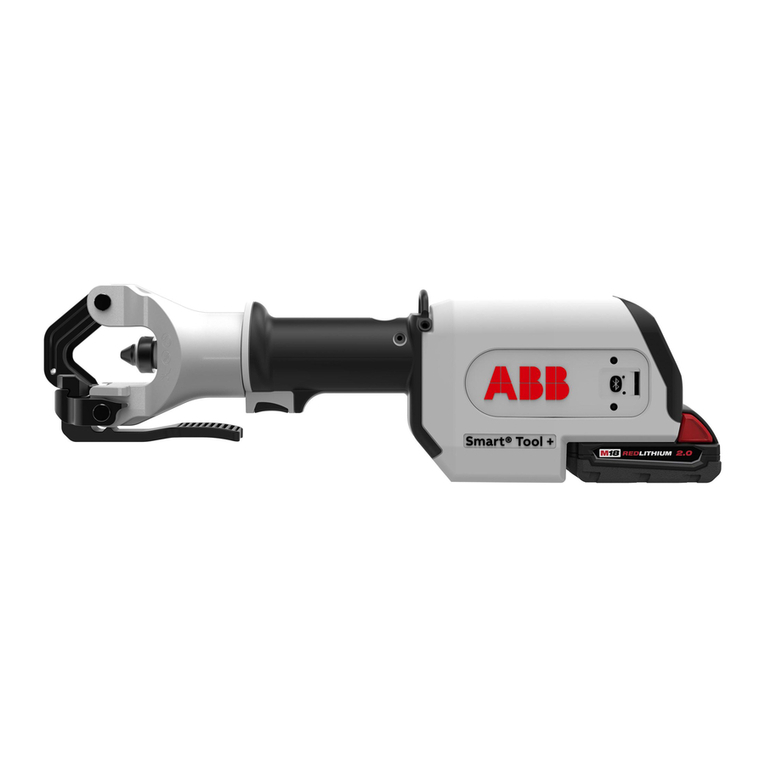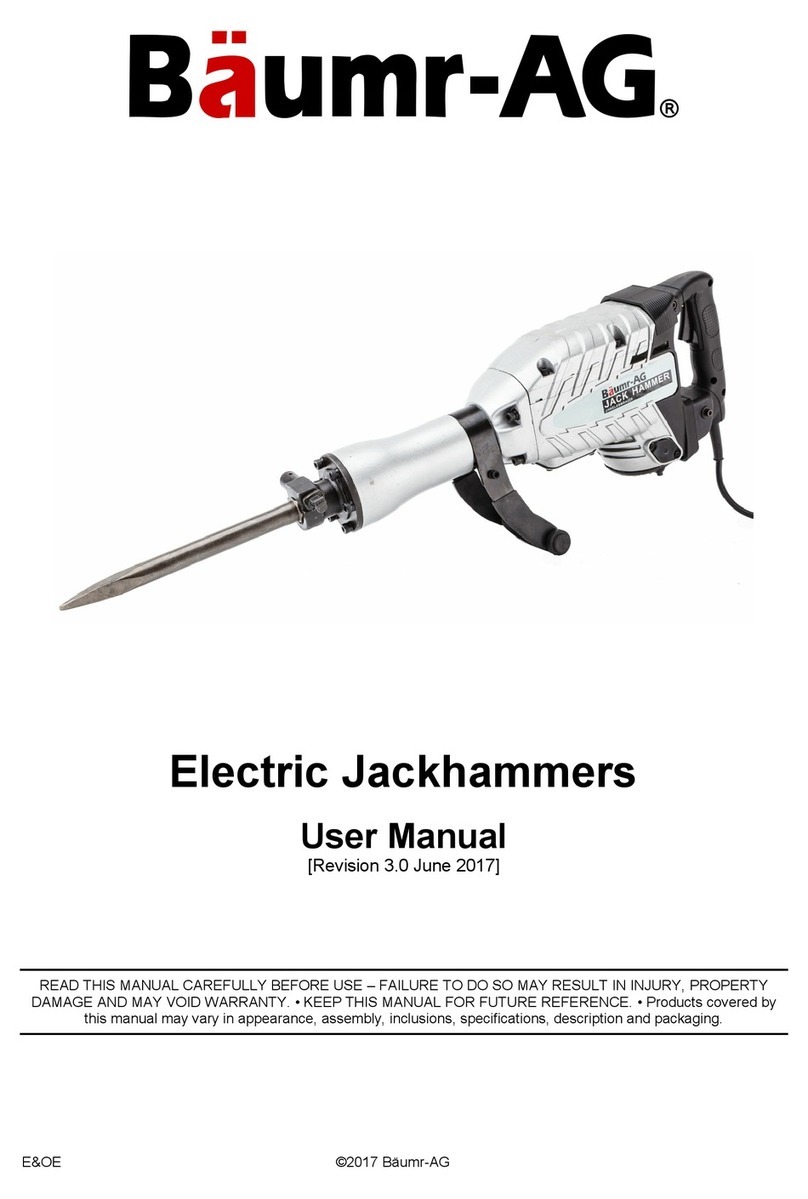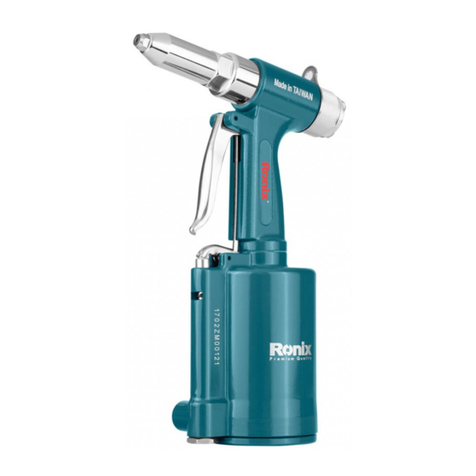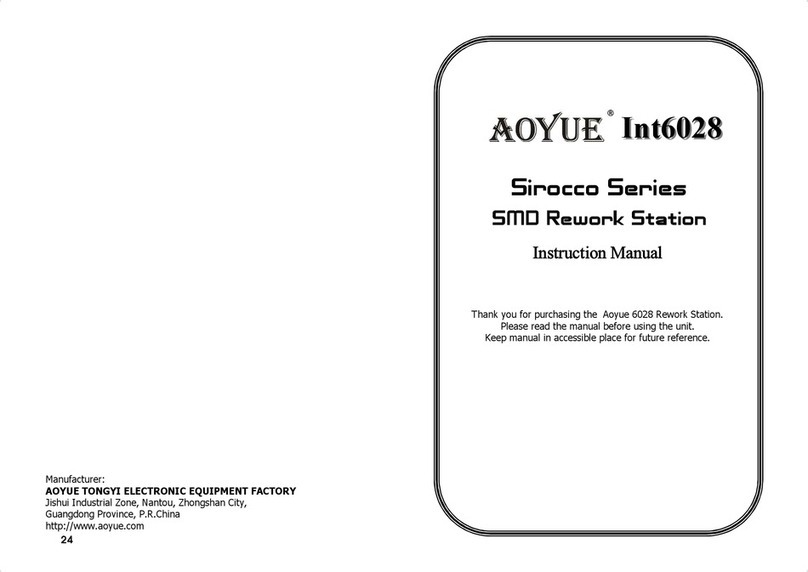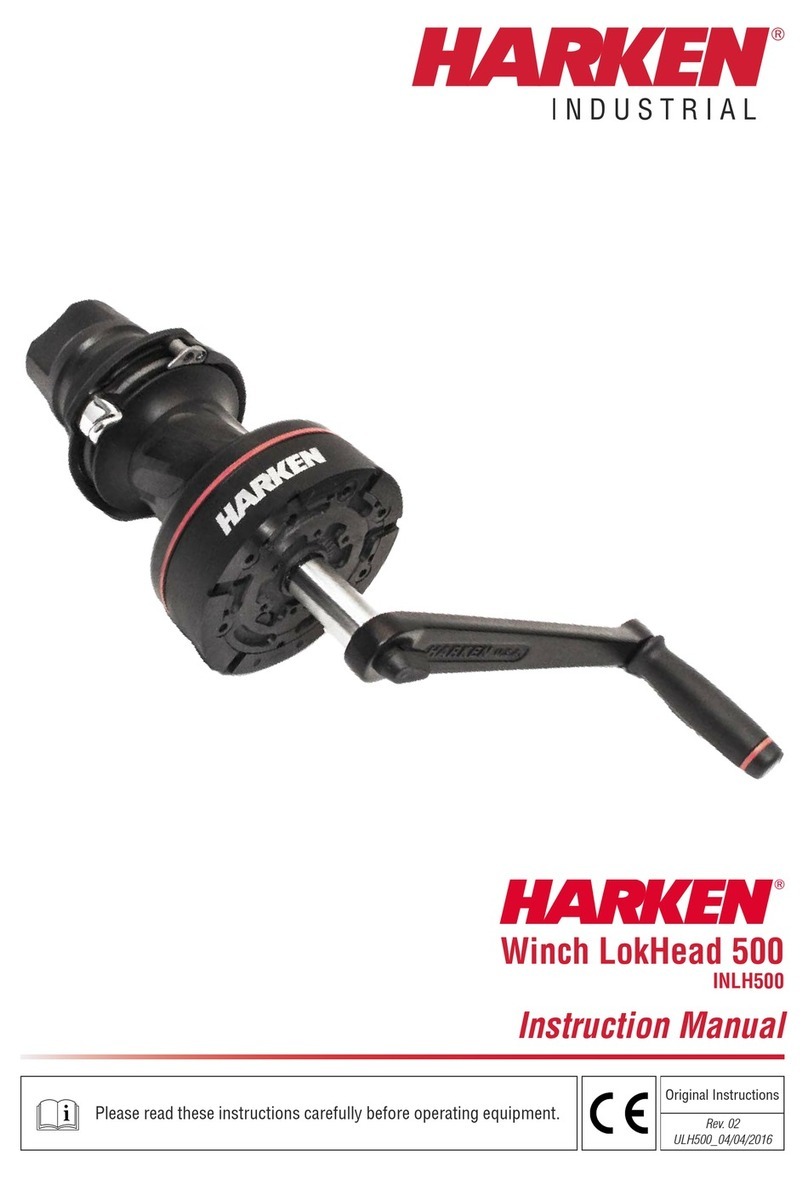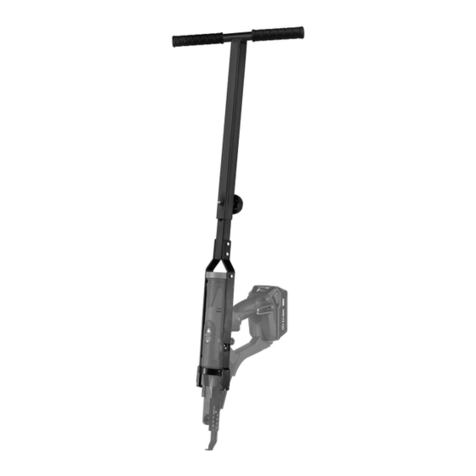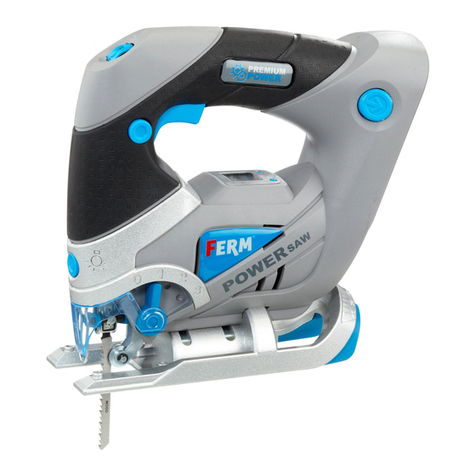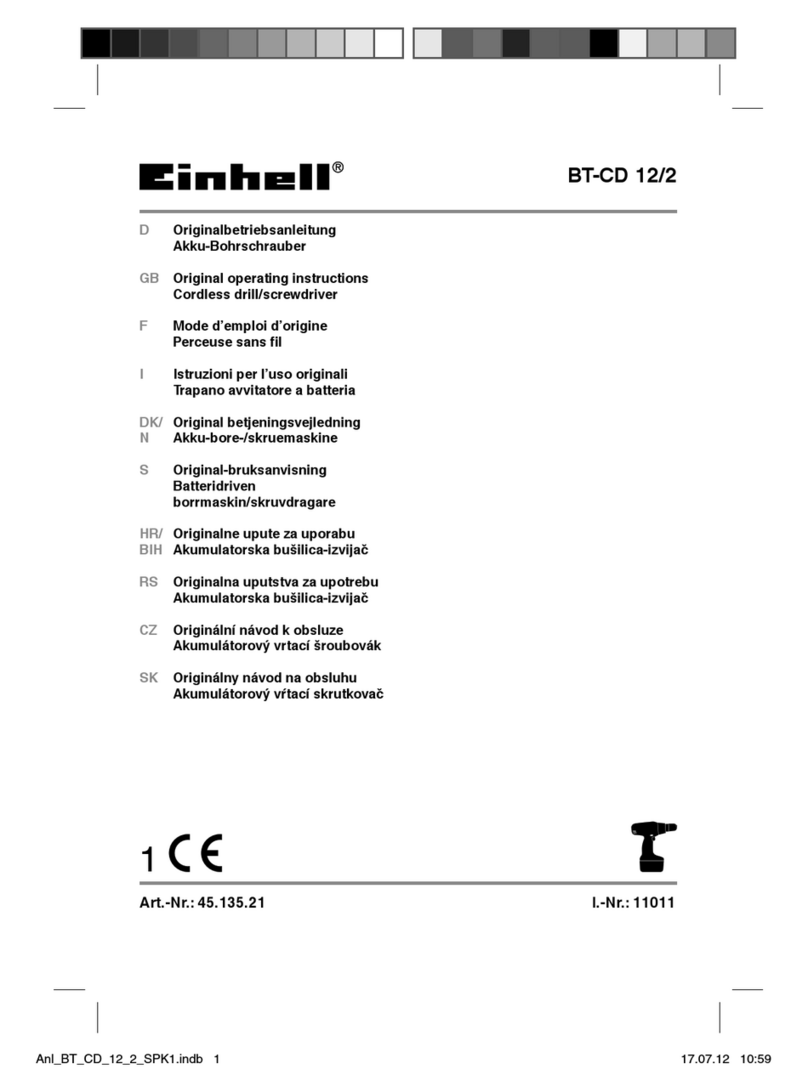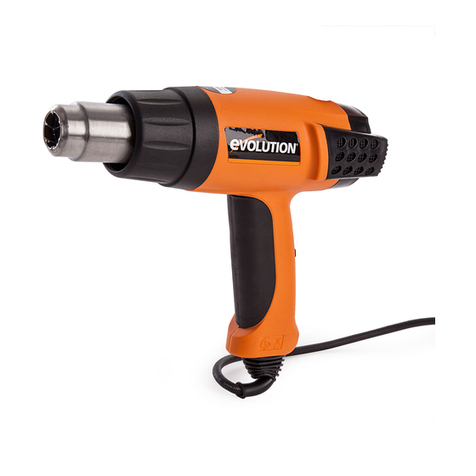Use person l protective equipment. Alw ys
we r eye protection. Protective equipment
such as dust mask, non-skid safety shoes, hard
hat, or hearing protection used for appropriate
conditions will reduce personal injuries.
Prevent unintention l st rting. Ensure the
switch is in the off-position before
connecting to power source nd / or b ttery
p ck, picking up or c rrying the tool.
Carrying power tools with your finger on the
switch or energizing power tools that have the
switch on invites accidents.
Remove ny djusting key or wrench before
turning the power tool on. A wrench or a
key left attached to a rotating part of the
power tool may result in personal injury.
Do not overre ch. Keep proper footing nd
b l nce t ll times. This enables better
control of the power tool in unexpected
situations.
Dress properly. Do not we r loose clothing
or jewelry. Keep your h ir, clothing nd
gloves w y from moving p rts. oose
clothes, jewelry or long hair can be caught in
moving parts.
If devices re provided for the connection
of dust extr ction nd collection f cilities,
ensure these re connected nd properly
used. Use of dust collection can reduce dust-
related hazards.
Power tool use nd c re
Do not force the power tool. Use the
correct power tool for your pplic tion. The
correct power tool will do the job better and
safer at the rate for which it was designed.
Do not use the power tool if the switch does
not turn it on nd off. Any power tool that
cannot be controlled with the switch is
dangerous and must be repaired.
Disconnect the plug from the power source
nd/or the b ttery p ck from the power tool
before m king ny djustments, ch nging
ccessories, or storing power tools. Such
preventive safety measures reduce the risk of
starting the power tool accidentally.
Store idle power tools out of the re ch of
children nd do not llow persons
unf mili r with the power tool or these
instructions to oper te the power tool.
Power tools are dangerous in the hands of
untrained users.
Mint in power tools. Check for mis lignment
or binding of moving p rts, bre k ge of
p rts nd ny other condition th t m y
ffect the power tool’s oper tion. If d m ged,
h ve the power tool rep ired before use.
Many accidents are caused by poorly
maintained power tools.
Keep cutting tools sh rp nd cle n. Properly
maintained cutting tools with sharp cutting
edges are less likely to bind and are easier to
control.
Use the power tool, ccessories nd tool
bits etc. in ccord nce with these instructions,
t king into ccount the working conditions
nd the work to be performed. Use of the
power tool for operations different from those
intended could result in a hazardous situation.
B ttery tool use nd c re
Rech rge only with the ch rger specified
by the m nuf cturer. A charger that is
suitable for one type of battery pack may
create a risk of fire when used with another
battery pack.
Use power tools only with specific lly
design ted b ttery p cks. Use of any other
battery packs may create a risk of injury and
fire.
When b ttery p ck is not in use, keep it
w y from other met l objects like p per
clips, coins, keys, n ils, screws, or other
sm ll met l objects th t c n m ke
connection from one termin l to nother.
Shorting the battery terminals together may
cause burns or a fire.
Under busive conditions, liquid m y be
ejected from the b ttery, void cont ct. If
cont ct ccident lly occurs, flush with
w ter. If liquid cont cts eyes, ddition lly
seek medic l help. iquid ejected from the
battery may cause irritation or burns.
Service
H ve your power tool serviced by qu lified
rep ir person using only identic l
repl cement p rts. This will ensure that the
safety of the power tool is maintained.
-3-
